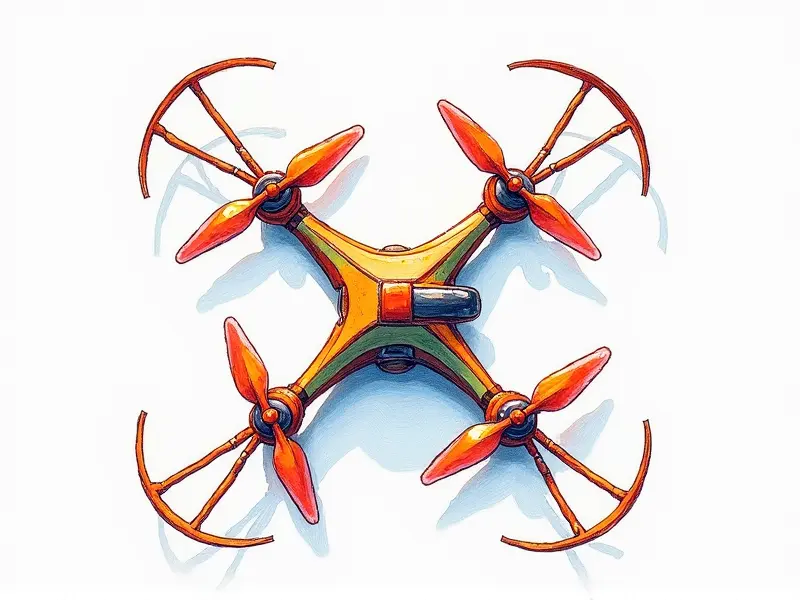How does a drone camera work?

Understanding Drone Camera Mechanics
Drones have revolutionized the way we capture aerial footage, providing stunning visuals that were once reserved for expensive helicopters and airplanes. At the heart of this technological marvel lies the drone camera, which combines advanced mechanics with sophisticated electronics to deliver smooth shots and high-quality imagery.
How Drone Cameras Achieve Smooth Shots
The secret behind a drone's ability to capture stable footage lies in its gimbal system. A gimbal is an internal mechanism that houses the camera and stabilizes it, counteracting any movement caused by wind or operator input. This three-axis stabilization ensures that the footage remains smooth and steady, even during rapid maneuvers.
Secrets of High-Quality Drone Photography
To produce high-quality images, drone cameras incorporate a range of features designed to enhance image clarity and detail. These include advanced sensors, high-resolution lenses, and image processing algorithms that correct for distortion and noise. Additionally, drones often come equipped with multiple shooting modes, allowing photographers to capture everything from sweeping panoramas to detailed close-ups.
What Makes a Great Drone Camera?
A great drone camera is one that delivers exceptional performance in various conditions. Key factors include:
- Sensor Quality: High-resolution sensors are essential for capturing fine details and vibrant colors.
- Lens Performance: A high-quality lens ensures crisp, sharp images with accurate color reproduction.
- Stabilization Technology: Robust gimbals provide smooth footage in any environment.
Unveiling the Science of FPV Cameras
First-person view (FPV) cameras are a specialized type designed for real-time viewing during flight. These cameras transmit video feed to goggles or screens, allowing pilots to see what their drone sees. FPV technology relies on low-latency transmission and high frame rates to provide an immersive experience.
Mastering Drone Camera Controls
To get the most out of your drone camera, it's essential to understand its controls. Most drones offer a range of settings that can be adjusted in real-time:
- Shutter Speed and Aperture: Control exposure and depth of field.
- ISO Sensitivity: Adjust the camera's sensitivity to light.
- White Balance: Ensure accurate color representation under different lighting conditions.
Exploring Drone Camera Features
Drones come with a variety of features that enhance their imaging capabilities:
- Autopilot Modes: Automate flight paths and camera angles for consistent shots.
- Time-Lapse Photography: Capture dynamic scenes over extended periods.
- Burst Mode: Take multiple photos in quick succession to catch the perfect moment.
The Magic Behind Drone Video Quality
The quality of drone footage is a result of intricate interplay between hardware and software. High-resolution sensors capture raw data, which is then processed by advanced algorithms that correct for noise, distortion, and other imperfections. This combination ensures that the final video or image is sharp, clear, and visually appealing.
How Drones Capture Stunning Footage
Drones use a variety of techniques to capture stunning footage:
- Aerial Perspectives: Provide unique angles not possible with ground-level cameras.
- Hyperspectral Imaging: Use multiple wavelengths of light for detailed analysis.
- 360-Degree Panoramas: Stitch together images to create immersive, spherical views.
Inside Drone Camera Technology Explained
The inner workings of a drone camera involve several critical components:
- Sensors: Capture light and convert it into digital data.
- Lenses: Focus the captured light onto the sensor.
- Gimbals: Stabilize the camera during flight.
Secrets of Drone Cameras Revealed
To truly master drone photography, it's important to understand some lesser-known aspects:
- Battery Life: Longer battery life allows for extended shooting sessions without recharging.
- Data Storage: High-capacity storage ensures that you can capture large volumes of high-resolution footage.
- Weatherproofing: Durable construction protects the camera from harsh environmental conditions.
Conclusion
The world of drone photography is both fascinating and complex, with each component playing a crucial role in delivering breathtaking aerial imagery. By understanding how drone cameras work—ranging from their mechanics to advanced features—you can unlock new creative possibilities and elevate your footage to the next level.

